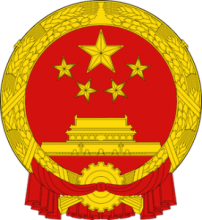Resource information
This Law is enacted with a view to protecting, developing and making rational use of grasslands, improving the ecological environment, maintaining the diversity of living things, modernizing animal husbandry and promoting the sustainable development of the economy and society.The grasslands are owned by the State, with the exception of the grasslands owned by collectives as provided for by law. The State-owned grasslands may be assigned for use to the units under the ownership by the whole people and to collective economic organizations. The grasslands owned by collectives or the State-owned grasslands which have been assigned for use to collective economic organizations may be contracted for management by households individually or jointly within the said collective economic organizations. The plan for protection, development and use of grasslands shall dovetail with the overall plan for land use and be coordinated with the plans for environmental protection, water and soil conservation, prevention and control of deserfication, and for water resources, and long-term plans for forestry, overall urban planning, village and market town planning and other relevant plans.The competent administrative department for grasslands at or above the county level shall conduct dynamic monitoring of the basic conditions of the grasslands, such as the area, grade, natural disasters and biological epidemics, and provide timely service in respect of dynamic monitoring and early warning information. Contractors for grassland management shall make rational use of the grasslands, and they may not exceed the stock-carrying capacity verified by the competent administrative department for grasslands. Contractors for grassland management in pastoral regions shall practise regional rotation grazing, rational distribution of herds and balanced use of grasslands. People's governments at or above the county level shall enhance protection of and control over rare and endangered species of wild plants and the resources of germplasm on the grasslands. Strict measures shall be adopted to protect grassland from pollution, soil erosion and land reclamation. Local authorities shall take measures to combat grassland pests and mice and take measures to prevent and treat endemic diseases among livestock and diseases. Implemented by: Measures of Shaanxi Province for implementing the Grassland Law of the People's Republic of China. (2009-07-24) Implemented by: Measures of the Tibet Autonomous Region for implementing the Grassland Law of People's Republic of China (2010). (2010-07-30) Implemented by: Measures of the Xinjiang Uygur Autonomous Region for implementation of the Law of the People's Republic of China on Grassland. (2011-07-29) Implemented by: Measures of the Tibet Autonomous Region for implementing the Grassland Law of People's Republic of China. (2006-12-12) Implemented by: Measures of Qinghai Province for implementing Grassland Law of the People's Republic of China. (2007-09-28) Implemented by: Regulations of the Ningxia Hui Autonomous Region on Grassland Management. (2005-11-16) Implemented by: Regulations of the Inner Mongolia Autonomous Region on Protection of Basic Grasslands. (2011-09-29) Implemented by: Grassland Regulation of Heilongjiang province. (2005-08-19) Implemented by: Grassland Regulations of Gansu province. (2006-12-01) Implemented by: Measures of the Xinjiang Uygur Autonomous Region for implementing the Grassland Law of People's Republic of China. (2011-07-29) Implemented by: Measures of Sichuan Province for implementing Grassland Law of the People's Republic of China. (2005-09-23) Implemented by: Measures for the assessment of grass seed inspectors. (2009-04-24) Implemented by: Measures for the administration on grass seeds. (2006-01-12) Implemented by: Measures for the Administration of Grass Seeds (2015). (2015-04-29)



